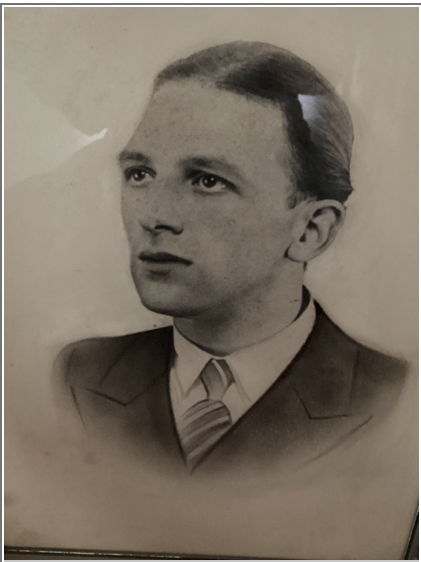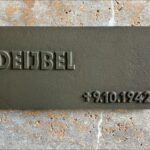Jacobus Deijbel
- Date of Death: 8 October 1942
- Place of Birth: Rotterdam, the Netherlands
- Place of Death: Sick barracks in Alderney
- Date of Deportation: Arrived Alderney early 1942
- Address when Deported: Ridderspoorstraat 45e, Rotterdam, the Netherlands
- Place of deportation: Alderney
- Sites deported to: Norderney,
By Daan Stokvis
The grave of Jacobus Deijbel, who died in the infirmary on 8 October 1942, is (or was) located in the cemetery of St Anne’s church, Alderney, in row C. A crude gravestone made by Deijbel’s comrade Herman Harrand covers the grave. As Harrand later wrote, ‘This is what I was able to achieve for Koos [a shortened form of Jacobus] Deijbel: that he was not dumped in a mass grave like so many of the dead on Alderney, especially the Russians. I went to the German Island Commander to get permission for him to have his own grave. We dug the pit ourselves and put Koos in it.’’[1]
Apart from a small article published in 1981 quoting Herman Harrand about his OT work on Alderney during the Second World War, not much is known about his friend Jacobus Deijbel, who is buried on the Channel Island. Deijbel was a young house painter in Rotterdam who, in early 1942, decided to join Harrand in working for the Germans abroad. “We both had nothing to do, no work, we were young and a bit adventurous and so I thought: let’s go for it”, wrote Harrand. Through a Dutch subcontractor, Sporck, they accepted OT work in France. They left the Netherlands in June 1942 and travelled by train to St Malo. It was in this French port town that the two young Dutch men were told that they would be working in Alderney. “By then we immediately felt less willing”, wrote Harrand.
In the 1981 article, Harrand states that the working conditions on Alderney were very bad, but still nothing compared to the life of the Ukrainian forced laborers on the same island.
‘We were stationed in barracks and had to work long hours every day, mainly painting the Germans’ houses. We were given incredibly bad food, but the Germans still treated us Hollanders like royalty, when you saw what they did to the Russians. They were forced laborers from the Ukraine, lived in another camp and starved to death, you could see them lying in the streets every day. The bodies were dumped on a shit cart and then dumped in an open pit. You could hear their legs creaking.’
Deijbel and Harrand both suffered in Alderney from dysentery because of their hard lives, which made it almost impossible for them to work. Harrand survived the illness, but Deijbel was hospitalized in a sick barrack.
‘I visited him there; he was in bad shape at the time. He said: Herman, I’m not going to make it, I have such pain all over, I don’t think I’ll make it home: I said: Ah, Koos, what nonsense….But he took off his two rings and gave them to me. He asked me to give them to his mother later. A few days later they brought his body. I buried Koos and then got permission to go to Rotterdam to tell Koos’ family about his death.’
Deijbel died at the age of 27 on 10 October 1942; his friend Herman Harrand left Alderney the same month.
[1] Translated. Haagsche Courant, ‘ Jacobus Deijbel stierf op Alderney’, 13-6-1981.
Map
- Cemetery / Mass Grave
- Concentration Camp
- Forced Labour Camp
- Prison
- Worksite / Fortification

